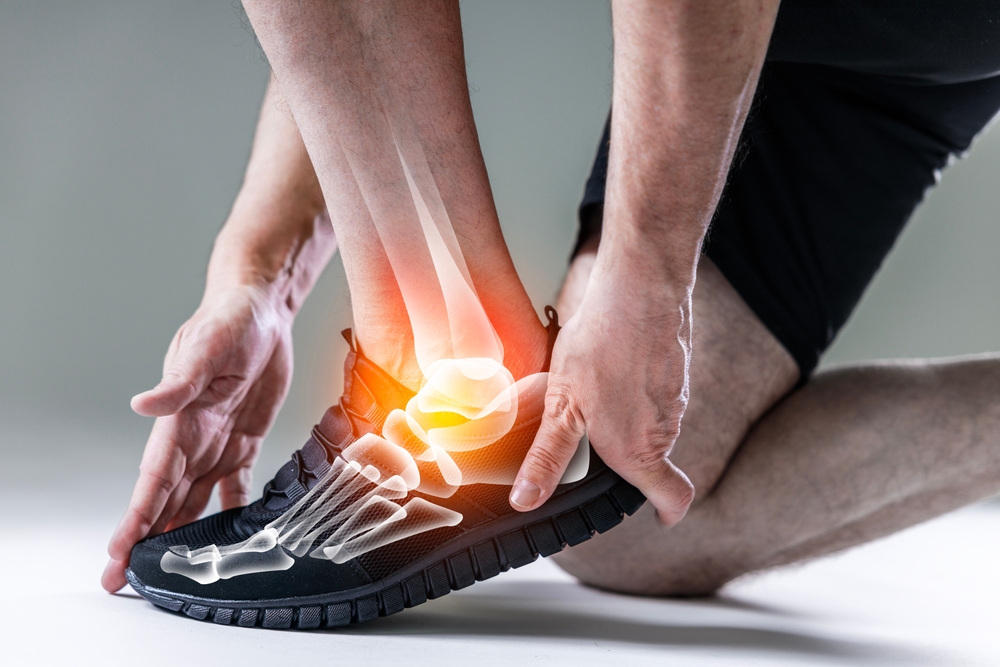Discover 3 Natural Tips That May Help with Ankle Swelling
Swollen ankles can be uncomfortable and concerning, often affecting daily activities and mobility. While there are various causes for ankle swelling, ranging from minor issues to more serious medical conditions, many people seek natural remedies to alleviate this common problem. In this article, we'll explore three natural tips that may help reduce ankle swelling, discuss home remedies that can be safely implemented, and provide guidance on when it's crucial to consult a healthcare professional.

What causes ankle swelling?
Ankle swelling, also known as edema, occurs when excess fluid accumulates in the tissues around the ankle joint. Several factors can contribute to this condition, including prolonged standing or sitting, pregnancy, injuries, or underlying health issues such as heart, kidney, or liver problems. Understanding the root cause is essential for effective management and determining whether natural remedies might be beneficial.
How can elevation help reduce ankle swelling?
One of the simplest and most effective natural remedies for swollen ankles is elevation. Raising your legs above heart level can help encourage fluid drainage from the ankles and feet, potentially reducing swelling. To practice this technique:
-
Lie down on a flat surface, such as a bed or couch.
-
Place several pillows under your legs to elevate them above your heart.
-
Maintain this position for 15-30 minutes, several times a day.
For best results, try to elevate your legs whenever you’re resting or sleeping. This method is particularly helpful for swelling caused by prolonged standing or sitting, as it counteracts the effects of gravity on fluid accumulation.
Can compression socks or bandages provide relief?
Compression therapy is another natural approach that may help alleviate ankle swelling. By applying gentle pressure to the affected area, compression socks or bandages can help improve circulation and reduce fluid buildup. Here’s how to use compression effectively:
-
Choose properly fitting compression socks or ask your healthcare provider about appropriate bandaging techniques.
-
Put on compression socks in the morning before swelling occurs, if possible.
-
Wear them throughout the day, especially during periods of prolonged standing or sitting.
-
Remove the compression garments before going to bed, unless otherwise instructed by a healthcare professional.
It’s important to note that compression therapy may not be suitable for everyone, particularly those with certain circulatory issues. Always consult with a healthcare provider before starting any new treatment regimen.
How can dietary changes impact ankle swelling?
Modifying your diet can play a significant role in managing ankle swelling naturally. Certain foods and habits can contribute to fluid retention, while others may help reduce it. Consider the following dietary tips:
-
Reduce sodium intake: Excessive salt consumption can lead to fluid retention. Aim to limit processed foods and add less salt to your meals.
-
Increase potassium-rich foods: Potassium helps balance sodium levels in the body. Include foods like bananas, sweet potatoes, and leafy greens in your diet.
-
Stay hydrated: While it may seem counterintuitive, drinking adequate water can help flush out excess fluids and reduce swelling.
-
Limit alcohol and caffeine: Both can contribute to dehydration and fluid imbalances.
Remember that dietary changes should be made gradually and in consultation with a healthcare professional, especially if you have any underlying health conditions.
When should you visit a doctor for ankle swelling?
While natural remedies can be effective for mild cases of ankle swelling, it’s crucial to recognize when professional medical attention is necessary. Consult a healthcare provider if:
-
Swelling is severe, persistent, or accompanied by pain.
-
You experience difficulty breathing or chest pain along with ankle swelling.
-
The swelling is accompanied by fever or skin changes (redness, warmth, or discoloration).
-
You have a history of heart, liver, or kidney problems.
-
Swelling occurs suddenly or after an injury.
-
Home remedies do not provide relief after several days.
These symptoms may indicate underlying health issues that require proper diagnosis and treatment. A healthcare professional can conduct necessary tests and provide appropriate care tailored to your specific situation.
In conclusion, while natural remedies like elevation, compression, and dietary changes may help alleviate mild ankle swelling, it’s essential to approach these methods with caution and awareness. Always prioritize your health by seeking professional medical advice when necessary, especially if symptoms persist or worsen. By combining natural approaches with proper medical care, you can effectively manage ankle swelling and improve your overall comfort and well-being.
This article is for informational purposes only and should not be considered medical advice. Please consult a qualified healthcare professional for personalized guidance and treatment.




